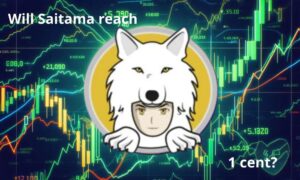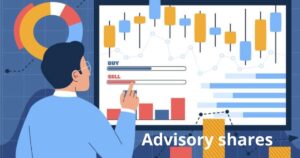Saitama, a prominent Web3 project, has transformed from a meme token into a powerful utility product, unlocking significant growth opportunities. Built on the blockchain platform, Saitama not only focuses on its value potential but also aims to develop a diverse ecosystem. This article will help you gain a better understanding of Saitama and its potential in the future.
1. What is Saitama?
Saitama (formerly known as Saitama Inu) is a Web3 project that launched in June 2021. Initially, this project was associated with the meme cryptocurrency trend, similar to Dogecoin and Shiba Inu. However, in June 2022, Saitama underwent a significant transformation when it transitioned to a new smart contract, reducing the token supply by 1/1,000,000 of its original amount. This change helped curb inflation and increased the stability of the project.

Another breakthrough was the burning of 55% of the total SAITAMA tokens when the Saitama v2 contract was launched. This shift marks Saitama’s departure from the meme coin category, aiming to become a true utility token. The development team clearly announced this change on their official website: “Saitama is no longer a meme token but has become a token with practical value.”
Currently, Saitama is focused on developing a diverse ecosystem, which includes blockchain-based products and services such as a token swapping platform, a cryptocurrency payment gateway, an NFT marketplace, Web3 educational courses, and blockchain games that allow players to earn money (Play-to-Earn).
2. Will Saitama reach 1 cent?
Saitama has the potential to reach 1 cent in the future, especially if the project’s development team successfully executes its plans to build a comprehensive ecosystem of diverse products and services. In fact, the token has recently shown signs of strong growth, outperforming many other digital assets. These positive fluctuations not only create a solid foundation but also bring hope for a promising future for Saitama.

However, it is important to note that, like any other cryptocurrency, the value of Saitama is strongly influenced by global economic factors that the development team and community cannot control. One factor that could directly affect Saitama’s growth is the interest rate policies from the U.S. Federal Reserve (Fed), as well as global economic instability. These factors could slow down the flow of investment into the cryptocurrency market in general, and significantly impact Saitama’s value.
3. Catalysts for potential price growth
3.1. Launch of new products and services
One of the most attractive aspects of the Saitama project is the strong development of its product and service portfolio. The current core features include:
- SaitaPro: A mobile and desktop app that connects all of Saitama’s services and features. SaitaPro comes with an integrated non-custodial wallet solution, allowing users to earn passive income through staking and yield farming.
- SaitaSwap: Saitama’s decentralized exchange (DEX) platform.
- SaitaPay: A service that enables users to easily purchase cryptocurrency using credit or debit cards.
- SaitaRealty: A real estate investment solution through tokenized technology, supported by the SaitaRealty token.
- SaitaLogistics: A peer-to-peer (P2P) blockchain logistics system that connects industry partners.
- Saitama Academy: A blockchain technology education platform offering paid courses.
- FANG: Saitama’s native NFT (Non-Fungible Token) marketplace.
- Wolfcaster Games: A collection of play-to-earn (P2E) games under the Wolfcaster brand.
These products are currently being developed at different stages. SaitaPro and SaitaSwap have already been launched, with SaitaPro surpassing 10 million downloads on Google Play Store and Apple App Store. Other features like SaitaPay and SaitaLogistics are also progressing well, with recent information from CFO Manpreet Kholi (Mkay Saitama) indicating that SaitaPay has completed its final development phase and SaitaLogistics has started the integration process.
3.2. User growth
User growth is another critical factor in assessing the project’s price potential. While the user growth rate of Saitama has remained relatively stable, with the total number of unique addresses rising from 137,521 to 140,808 in recent times, this trend is clearly on the upward trajectory. Notably, the rate of new address creation has seen a significant increase in the past few weeks.
3.3. Strong community
The growth in unique addresses is closely tied to the development of the Saitama community. A notable example of this is the official Twitter channel of the project, which has attracted nearly 400,000 followers just one and a half years after its creation in June 2021. This demonstrates the strong development of the community, a key factor that is essential for the long-term success of the project.
3.4. Low SAITAMA distribution among top holders
An important factor in evaluating the growth potential of a token is to consider the percentage of the total circulating supply held by the top holders. This distribution can reflect the concentration of the asset and indicate whether the token’s price is vulnerable to manipulation by “whales” (individuals who own a large amount of tokens).
It is noteworthy that an individual can own multiple addresses, which sometimes diminishes the value of this analysis. However, if the token is widely distributed and not concentrated in the hands of a few large holders, it suggests that the project has a high token dispersion and is less susceptible to price manipulation by large individuals.

3.5. Relatively low market capitalization leaves room for growth potential
When evaluating the potential of a cryptocurrency, market capitalization is the first key factor to consider in determining whether the price target is reasonable. A typical example is Shiba Inu, where many believe SHIB could reach $1, but for this to happen, its market capitalization would need to reach $550 trillion—around 7 times the total global GDP! This is practically impossible.
Unlike Shiba Inu, Saitama does not face this issue. With a current market capitalization of only about $113 million, Saitama still has a lot of room to grow. If Saitama reaches $0.01, its market capitalization would reach $445 million, a completely achievable figure.
From this perspective, it is also possible for Saitama to reach higher price targets. For example, if Saitama reaches $1, its market capitalization would be $44.5 billion—a challenging but not impossible number. To compare, at its peak in May 2021, Dogecoin reached a market capitalization of $88.7 billion, although that value was largely driven by speculation, as Dogecoin’s utility at the time was quite limited.
With its current market capitalization and a clear development strategy, Saitama still has a lot of room to rise. Although it hasn’t yet reached its highest point, the positive signals from token distribution and the project’s long-term goals indicate substantial growth potential. Keep an eye on Saitama’s development to seize investment opportunities in the future.















